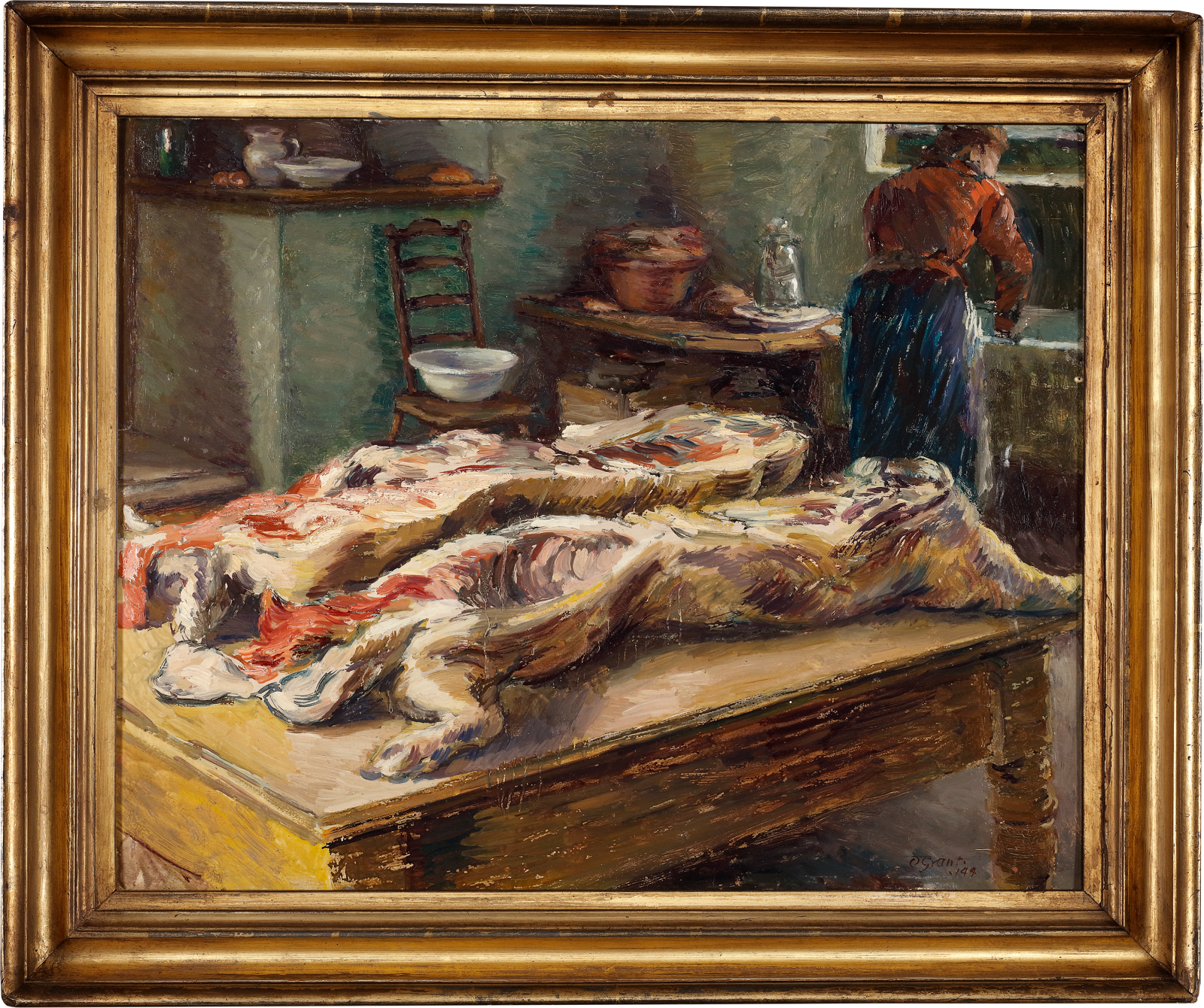
Duncan Grant
Already a prominent member of the Bloomsbury Group, the inter-war years confirmed Duncan Grant’s reputation as one of Britain’s leading artists. Throughout the thirties Grant exhibited extensively with London galleries and was also involved in the costume and set design for popular performances and ballets. By 1940 his paintings were being exhibited in galleries across Europe and the United States.With the outbreak of the Second World War in 1939, Grant abandoned his London studio and moved back to Charleston, a remote farmhouse in Sussex where Grant lived and worked with Bell from 1916 until his death. Originally an escape from London during the First World War (Grant and this then lover David Garnett were conscientious objectors), Charleston remained a countryside haven for the pair and their circle to avoid the turmoil of international conflict.
Despite his defiant pacifism, Grant painted two works for the War Artists’ Advisory Committee. However, most paintings from this period are of a domestic nature. This painting depicts the kitchen at Charleston. Loyal to the post-impressionist style that had inspired him in his youth and brought him into the Bloomsbury group, the painting is a flurry of quick brushstrokes of vibrant colour interlaced with dashes of white. The treatment of space reflects Grant’s transition from a life of travel to the inward-looking, enclosed and protective world at Charleston. Grant has filled half the canvas with the carcass as if seen from slightly higher vantage point, flattening the forefront of the painting. The woman at the sink in the background provides a vertical balance to the composition, though her cropped form also denies the viewer a full view of the domestic scene.
Though the woman could be Bell, it is more likely to be the cook and housekeeper, Grace Higgens, who was the longest serving member of domestic staff. She tended to household’s needs for over fifty years and is also the subject of Bell’s The Kitchen at Charleston from 1943, now hanging in the upstairs landing of the house. Grant’s interpretation of the similar scene differs considerably to Bell’s idyllic setting. The central, large wooden table displaying the ingredients for their next meal is, however, a focal point for both artists.
The large carcass is a surprising subject matter considering that food was strictly rationed during the war. The government’s ‘Dig for Victory’ campaign encouraged wartime self-sufficiency, and it is possible that pigs were reared domestically at Charleston. The Pig’s Carcass was included in Grant’s solo show at the Leicester Galleries in June 1945. The works from Charleston enjoyed popular success and all of the large canvases sold. This bold work is a testament to Grant’s role as a formidable force in the development of modern British art.
Duncan Grant’s focus on this domestic scene in many ways reflects his transition from a life of inter-war metropolitan freedom and foreign travel to the protective world of Charleston. Possibly aware of a similar subject memorably portrayed by Rembrandt (the Ox Carcass), Grant tackles the subject with a flurry of post-impressionist inspired brushstrokes and vibrant colour.
Though it has been suggested that the woman in the background could be Vanessa, it is more likely to be based on the housekeeper, Grace Higgens, who was the longest-serving member of the domestic staff at Charleston. She tended to the household’s needs for over fifty years and is also the subject of Vanessa’s Grace Higgens in the Kitchen, which usually hangs in the corridor outside Duncan’s bedroom at Charleston. Duncan referred to her as ‘the angel of Charleston’ on account of her charming and vivacious character.
Duncan’s interpretation of the kitchen at Charleston differs considerably from Bell’s more fulsome and domestic composition, although the central wooden table displaying the ingredients is a focal point for both artists. The large carcass is a surprising subject matter considering that food was strictly rationed during the war. The government’s ‘Dig for Victory’ campaign encouraged wartime self-sufficiency, and it is possible that cattle were reared on the farm at Charleston. Such a luxury at a time of restriction surely called for celebration, and this canvas certainly memorialises what would have been a moment of indulgence and excitement.
Provenance
Private Collection, UK.